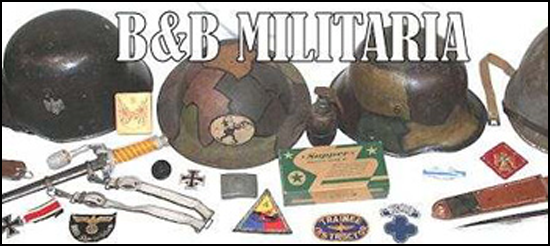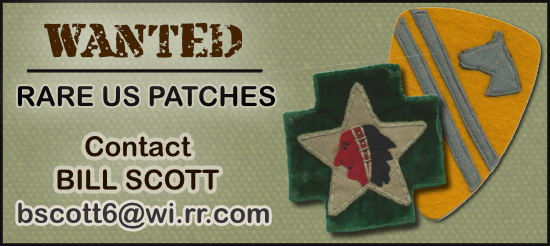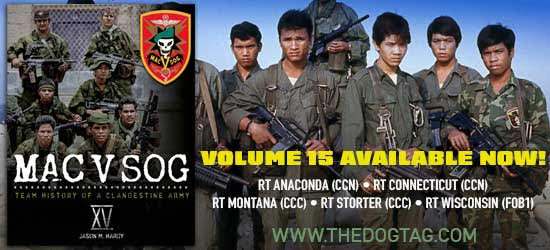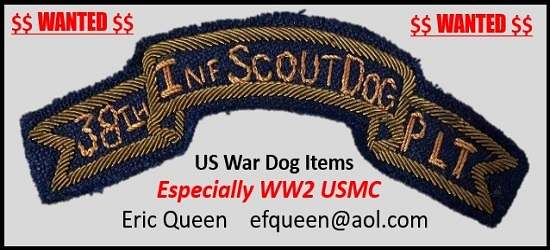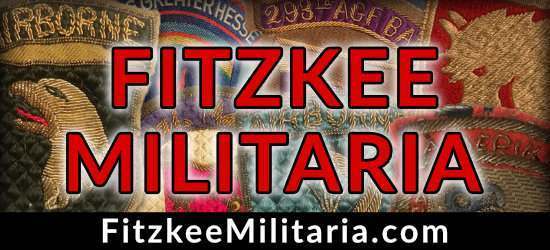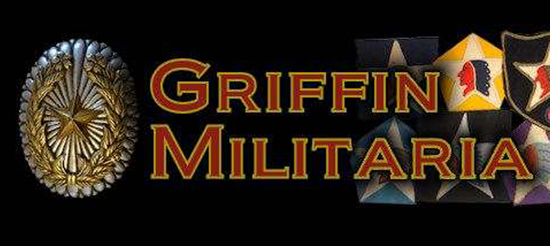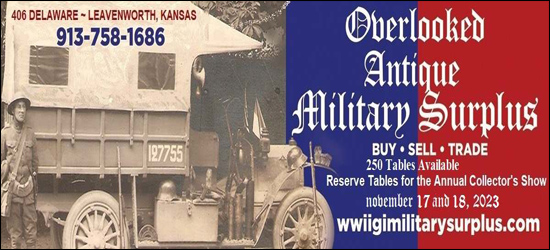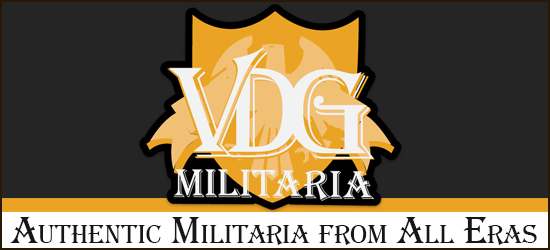-
Donate
Type donation amount in box below.
IMPORTANT! If you donate via PayPal using an e-mail address different than the one you are currently using on USMF and would like a 2024 Donor Icon added to your account, you MUST CONTACT vintageproductions or stratasfan and let them know what email address was used for the donation.
Thank you for supporting USMF.
Donate Sidebar by DevFuse -
Recent Posts
-

By JohnK83882 · Posted
Aside from the color and whether the fabric is synthetic or not, you can see from the weave of the web fabric if it's post WW2 or before. http://www.90thidpg.us/Equipment/Articles/Webbing/index.html -
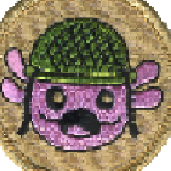
By AxolotlHelmet · Posted
Incredible uniform, story, and research! Bravo! -
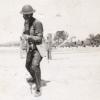
By mikie · Posted
I’m late for the party here, but thank you for this informative post. I have a sling I picked up years ago for no other reason than it was cheap. Now that I have a use for it I dug it out. Using the wonderful old camcorder trick, the sling is dated 1943. The keeper has the dimple associated with late/postwar slings. So there seems to be a couple of possibilities here. Either the dimples were used a lot earlier than thought, or it was replaced on my sling at some point. Any thoughts? mikie -

By SPAAF1943 · Posted
I know it's been a while since this thread was active but I wanted to share some photos I found in my search for the same answers. I found 3 different variations of stencils. I used this to create a vector file and I'll be creating my own stencils to recreate a few drums. -

By JSkaggs29 · Posted
1st Lt Edward A. Sobuta K Co., 7th Infantry Regiment 3rd Infantry Division Edward A. Sobuta was born on April 25, 1923 in Providence, Rhode Island. Sobuta was born into a Polish family. His father worked as a baker in Poland. His mother and father immigrated to the United States, arriving on July 12, 1910. Once his father moved over to the States, he continued his work as a baker, opening up his own bakery in New Britain, Connecticut. Edward worked for his father, prior to joining the Army. He enlisted on February 19, 1943 and after completing basic training, he was transferred to the 7th Replacement Depot in late July 1943. Then, in mid-August he was assigned to the 47th Infantry of the 9th Infantry Division. He stayed with this unit for about a month before he found his home with the 7th Infantry of the 3rd Infantry Division, on September 15, 1943. Sobuta was joining an already battle-hardened unit, who had fought throughout North Africa and Sicily. He arrived as a replacement and was assigned to K Company. The division was reequipping and preparing for their landings at Salerno. Other US units, the 36th and 45th Infantry Divisions, had been coming up against considerable German resistance in Salerno, prior to the 3rd ID landing. By the time the 3rd ID arrived, the Germans were pushed back into the surrounding mountains, and the beachhead was secured. First Battalion advanced further inland, attacking towards an area between the towns of Acerno and Montella. The battalion passed through the 30th Infantry at 0600 on September 24th. They headed north, following the Calore River. As they made their way, artillery started falling and enemy sniper fire came from the mountainous terrain. They continued their attack through the valley when machine gun fire rang out from their left side. Three German machine gun crews were positioned up in the mountains, laying destructive fire on Sobuta and the rest of the K Co. men. This temporarily stopped the battalion’s attack. This was Sobuta’s baptism by fire. The battalion continued this brutal fighting through the mountainous terrain, capturing enemy strongpoints as they advanced, throughout the rest of September. In early October, the division fought their way to the Volturno River, crossing it just past midnight on October 13th, under heavy artillery and small arms fire. Once across the river, K Co. was met with very heavy machine gun fire, inflicting many casualties amongst the company. After the hard fighting, they established a bridgehead and they continued fighting northward. By the end of October, they reached Marzano Appio. In mid-November, the regiment pushed through the Barbara Line and bivouacked in the area of Baja e Latina. At the beginning of the new year, the regiment received word that they were going to be a part of the next big assault in the Mediterranean region, Operation Shingle. The landings were scheduled for January 22nd at 0200 hours, a couple miles south of Nettuno, Italy. All three battalions of the 7th Infantry landed with a small number of casualties. They soon established a beachhead and dug-in. On January 30th, at 0200 hours, the regiment attacked, along with the 15th Infantry and the 4th Ranger Battalion, towards Cisterna. They were following behind the initial attack that was carried out by the 1st and 3rd Ranger Battalions at 0100 hours. Little did the Marne Men know, the two leading Ranger Battalions were encircled by the enemy and they lost communication. With the loss of the Ranger Battalions, the 7th infantry was up for an intense fight. They were constantly met with heavy machine gun fire when they tried to advance. After enduring the hard fighting, they dug-in and set up defenses along the Canale Mussolini, and remained there from February 7th through the 14th. The fighting on the Anzio beachhead started to turn into a stalemate mimicking the trench warfare that took place in WWI. It was during this period that multiple German counter attacks were carried out, and constant artillery barrages took place. This trench warfare carried on into March. At the end of February and the beginning of March, K Co. was in the vicinity of Ponte Rotto, Italy. On the last day of February, Germans broke through the friendly lines of a neighboring unit, the 509th Parachute Infantry Regiment, leaving 2nd Battalion’s flanks exposed. On the night of February 29th, enemy tanks started closing in on Sobuta and the men of K Co. and were being bombarded by nebelwerfer fire, inflicting many casualties on the forward elements. Overall, they held off the attacks, but they remained in contact with the enemy throughout the night. In the early morning of March 1st, at 0325 hours, the Germans attacked with tanks and infantry, but they were driven off. Not long after, at 0600 hours, the Germans attacked the forward elements of K Co., opening up with an artillery barrage followed by more tanks and infantry. Sobuta’s platoon, 2nd platoon, took the brunt of this attack. Sobuta noticed there were tanks heading straight for his platoon’s position, with seven tanks accompanied by infantry. As a squad leader, he instructed his men to withdraw from the position. Sobuta distracted the advancing tanks and infantry, allowing his men to retreat. For this action, Sobuta earned a Silver Star Medal. His citation reads: “On 1 March 1944, at 0600 hours, Sergeant Sobuta left the cover of his foxhole and advanced to within 25 feet of two enemy tanks which, supported by infantry, had succeeded in overrunning the positions occupied by the forward squads of second platoon, in a man effort to cover the withdrawal of his squad, which was being threatened. Disdaining aimed machine gun fire, which barely missed him, and the muzzle blast of tank guns aimed directly at him, he drew the attention of the enemy to himself by throwing hand grenades and firing his sub-machine gun until his men had safely reached the company support line, 250 yards to the rear, at which time he himself withdrew.” Friendly artillery and mortar fire rained down on the enemy, breaking up the attack. Sobuta’s company continued to stay on the defensive for the majority of March. During this time, many patrols were carried out to maintain contact with the enemy, while the friendly artillery harassed the enemy. By the end of the month, they were relieved, and they moved to an area called “the Pines” for rest and training. The regiment was in combat for 67 consecutive days. In mid-April the men returned to the line and continued defending the Anzio beachhead. On the night of April 12th into the 13th, Third Battalion moved up to the line. Operations were carried out shortly after they arrived back on the line, in an effort to push the line of resistance further into German territory. As they pushed further in they were constantly under artillery and small arms fire. Overall, the American forces were having a hard time getting out of the Anzio beachhead. Orders were received in early May 1944 to carry out a massive attack, in hopes of breaking out of Anzio. The 7th Infantry’s objective during this assault was to capture the city of Cisterna di Littoria. On May 23rd, at 0630 hours, the attack kicked off. Initially resistance was light, until they advanced further, they were met with heavy enemy fire. It was during this first day of the attack that Sobuta received his first wound, a shell fragment wound to the hip and buttocks. He was evacuated to the rear, where he recovered from his wounds. While recovering, the 7th Infantry captured the town of Cisterna. Then, in early June, the 7th Infantry then marched into Rome and helped secure the city. After recovering, he rejoined his company in June 1944. After Rome was captured, the 3rd ID received training for their next amphibious assault. While the fighting in the Normandy region was taking place, plans were formed to carry out an amphibious landing in Southern France, in an attempt to take some pressure off of the Allied forces in northern France. The landings were scheduled for August 15, 1944. The 7th Infantry landed at Baie de Cavalaire beach, known as Red Beach. The Third Battalion received little enemy fire as they landed. They followed Highway 98, west, along the beach, with K Co. leading the way. As they made their way down the road, they encountered heavy resistance. Their advance came to a standstill on the morning of the 16th, when they encountered an enemy strongpoint near Pointe de Layet. After capturing that strongpoint, the regiment continued fighting along the French coast. They pursued the enemy north towards Montelimar. US forces that converged on Montelimar, at the end of August, attacked in such ferocious manner that the Germans forces near Montelimar were trapped as they were attempting to retreat. US artillery fire was laid down on the retreating Germans, annihilating the column. After their success at Montelimar, they attacked towards Besancon. Once again, the company fought hard for the town, coming up against intense opposition. The town was captured on September 7th. As the 7th Infantry continued their attack north, capturing Dampierre-sur-Linotte on the morning of the 11th. Shortly after capturing the town, Sobuta and the men of K Co. received intense enemy fire, including enemy flakwagon fire, as close as 800 yards away. It was during this exchange that Sobuta was wounded a second time. He got his wounds dressed quickly and was sent back to the line. The 7th Infantry was then on their way towards Lure. The battalion attacked Hill 410 in the vicinity of Noroy-le-Bourg, on September 13th, which is when Sobuta received his third wound. Town after town, the 7th Infantry continued their push to the northeast encountering heavy resistance as they went, eventually making their way to the Vosges Mountains. The regiment made their way through the La Mortagne Valley receiving small arms and tank fire along the way. Sobuta’s company attempted crossing the valley, at Tempoix, but were met with heavy artillery and mortar fire, on October 26th. Sobuta was wounded for the fourth time, receiving a shrapnel wound to his cheek. He remained in the hospital until December 1944, recovering from his wound. While he was off the line, the 3rd ID crossed Muerthe River and headed east towards the Rhine. Once Sobuta was discharged from the hospital, he was sent back to the front lines. He rejoined the unit when they were near the Rhine River. When the major German offensive took place through the Ardennes, to their north, kicking off the Battle of the Bulge, the 7th Infantry was positioned on the west banks of the Rhine. A small number of enemy troops attempted to cross the Rhine but were stopped. Soon the 7th Infantry made their way into a region known as the Colmar Pocket. On the morning of December 21st, the 3rd ID relieved elements of the 36th ID. The 7th Infantry setup in defensive positions for the remainder of December into the New Year. Since Sobuta joined the unit in September of 1944, he showed he was an intense fighter and true leader. On January 15, 1945 his exceptional leadership was recognized when he received a battlefield commission. After commissioning, he continued fighting alongside his men in K Co., most likely serving as a platoon leader. For the remainder of January, the 7th Infantry continued attacking across the Colmar Pocket. The Third Battalion fought for the town of Houssen on the morning of the 25th, taking around 700 enemy prisoners. They went on to cross the Canal de Colmar on the night of the 29th. As they made their way through the Colmar Pocket, the fighting grew intense. On February 4th, the Third Battalion was tasked with clearing out the woods, known as Bois de Boulay, located on the west bank of the Rhine River. It was near this location where Sobuta received his fifth wound, shrapnel wounds to his leg and hand. He quickly recovered and was sent back to the frontlines. After clearing out the Colmar Pocket and conducting mopping up operations, the 7th Infantry dug-in along the banks of the Rhine, keeping an eye out for the enemy. In mid-March, the 7th Infantry was on the move again. They arrived at their new location, Singling, France, on March 14th. They were nearing the Siegfried Line. Sobuta’s company made their way through minefields, reaching an area by St. Joseph’s Church, northeast of Utweiler. They were met with an intense enemy counter-attack, causing many casualties amongst the company. After the counter-attack was repulsed, they continued the attack. During this day was when Sobuta received his sixth wound. The unit continued fighting through the Siegfried Line, clearing pillbox after pillbox. Eventually, the regiment reached the Rhine again, crossing it during the early morning hours of March 26th. They crossed, in boats, under heavy and accurate enemy fire. After the Rhine crossing, the regiment advanced quickly. The Third Battalion reached the town of Laudenbach, located near the Main River on March 30th. After crossing the river, they headed toward the city of Nuremberg, capturing towns along the way. The attack on the city kicked off on the 16th of April. The Third Battalion was engaged in battles on the outskirts of the city, and then entered into the city on the 18th. Nuremberg was cleared a couple days later, on the 20th. After Nuremberg, they continued east, taking many prisoners. They liberated a prisoner of war camp at Unt Thurheim, which contained some prisoners that were Marne Men that were captured at Anzio. And the regiment went on to capture Berchtesgaden on May 4th. A few days later, Germany surrendered. Sobuta remained overseas and transferred to the 70th Infantry Division, serving with 274th Infantry Headquarters. He travelled back home, arriving on October 7, 1945. He was discharged as a First Lieutenant on November 12, 1945. After being discharged, he continued working at his father’s bakery. He continued to live in Connecticut for the remainder of his life and passed away at the age of 88 on July 6, 2011. I believe he wore this Ike jacket before and after he commissioned, because there is evidence of lieutenant ranks on the epaulettes. Photo #10: 3rd ID men at Cisterna, May 1944 Photo #11: 3rd ID men, Operation Dragoon, August 15, 1944 Photo #12: 7th Inf men, Rhine Crossing, March 26, 1945 Photo #13&14: 7th Inf, Nuremberg, April 1945 Photo #15: 3rd ID men on tanks, Berchtesgaden, May 1945 -

By mikie · Posted
With a little cheating, I have the trigger group together and working. The cheating involved using a weaker spring for the plunger. The hammer snap is a bit wimpy but everything works, trigger, hammer and safety! Pictures show the safety on, safety off and “fired”. This is good enough for my wall hanger. -
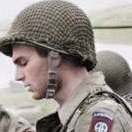
By Gear Fanatic · Posted
Dang I was looking forward to this, but I will be in Australia! -

By Gear Fanatic · Posted
Agreed, sorry I kind of took over the topic with my questions. Thanks for the insight everyone who answered and if anyone had any more advice or anything else to say I wouldn’t mind a PM. Thanks -

By Gear Fanatic · Posted
Good thing I run cross country… -
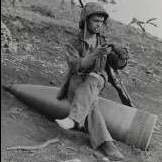
By Blackhat · Posted
I’ll be there, visiting from Australia and looking forward to experiencing my first Militaria show in the US. Cheers, Sean
-
-
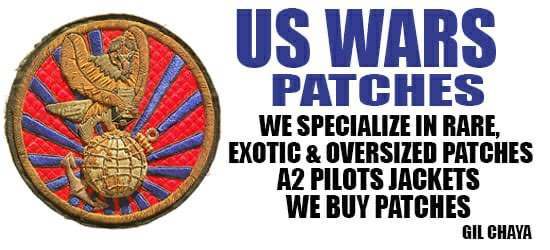
-

-
* While this forum is partially supported by our advertisers, we make no claim nor endorsement of authenticity of the products which these advertisers sell. If you have an issue with any advertiser, please take it up with them and not with the owner or staff of this forum.





